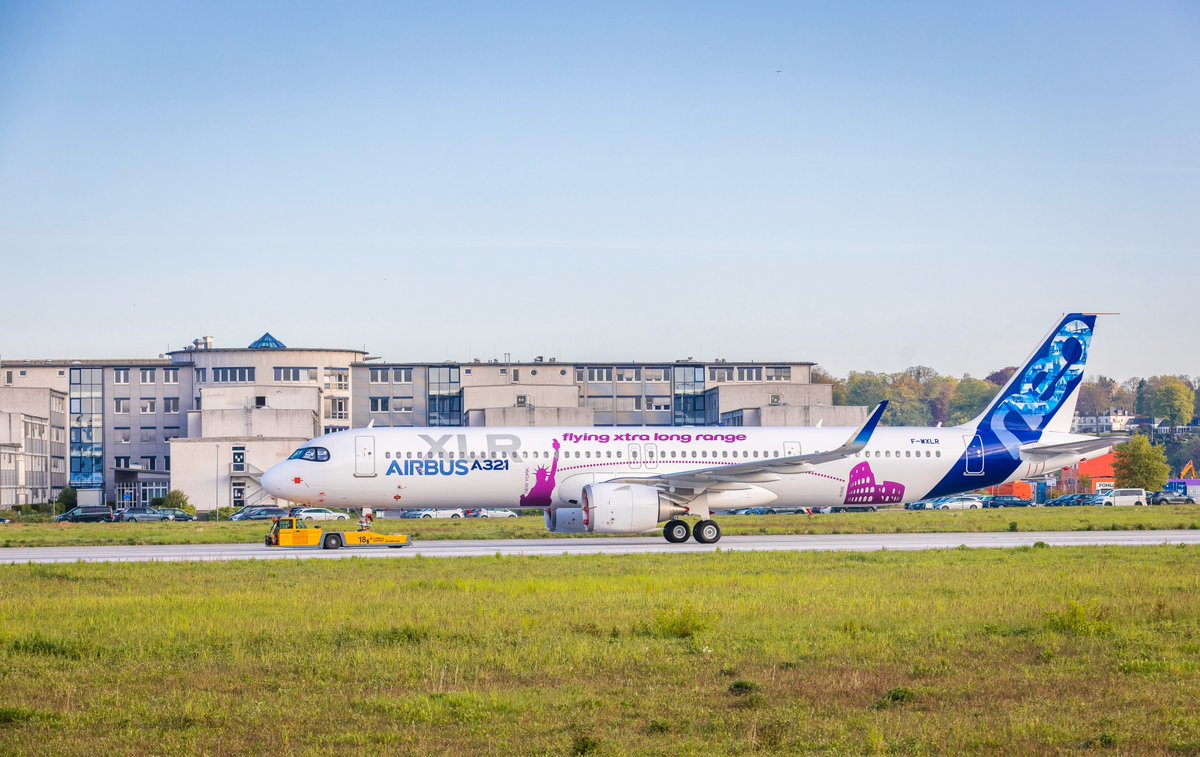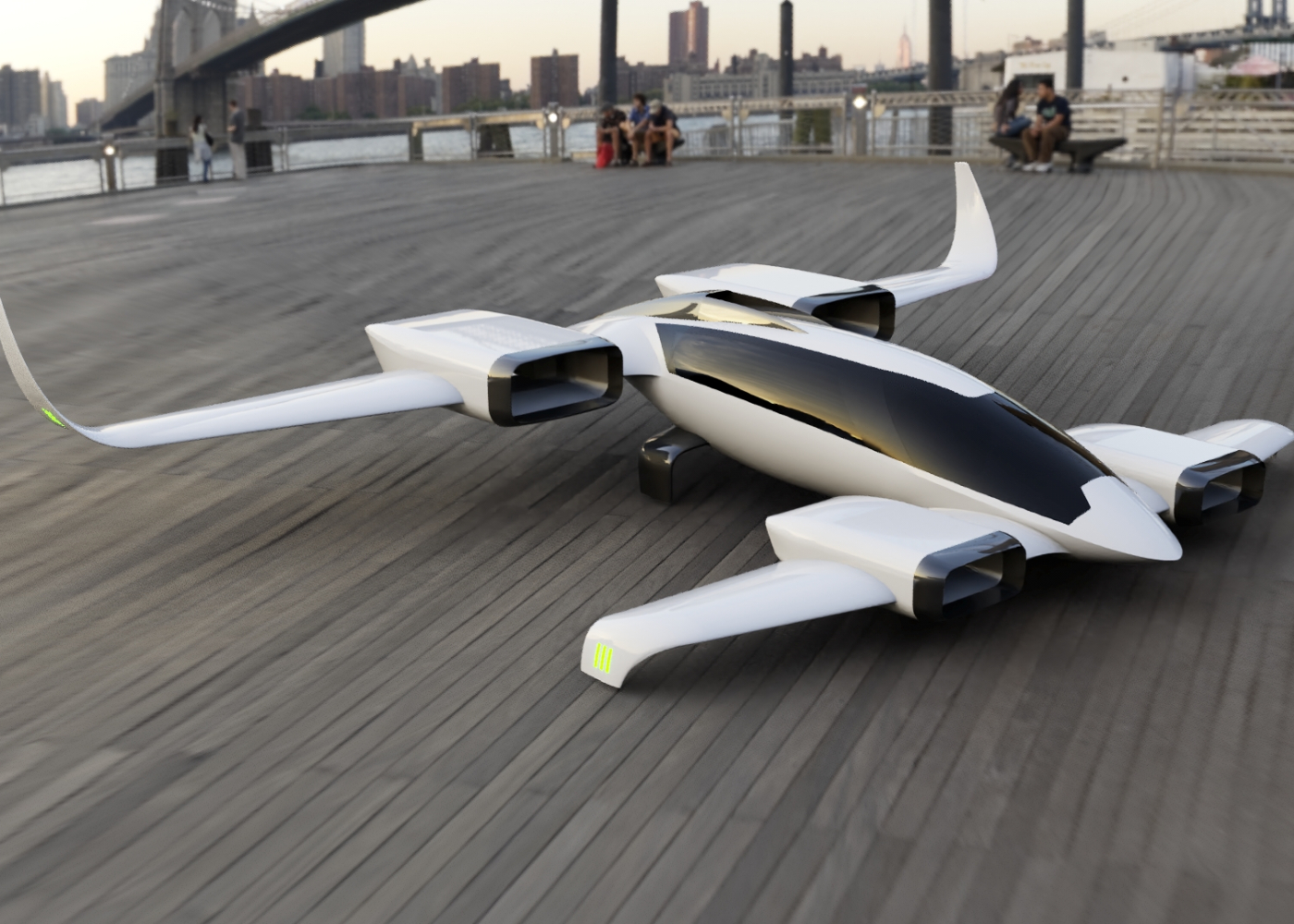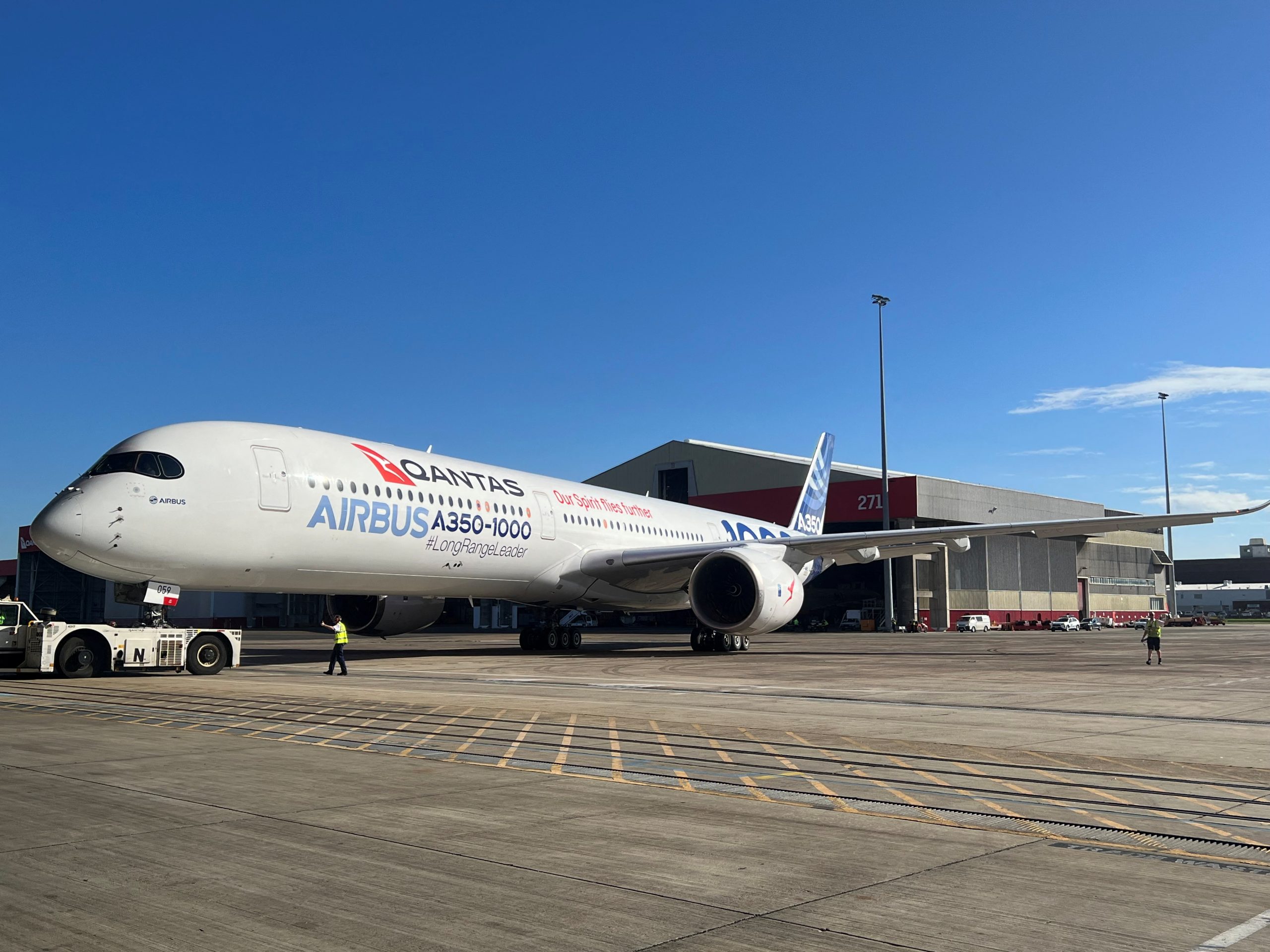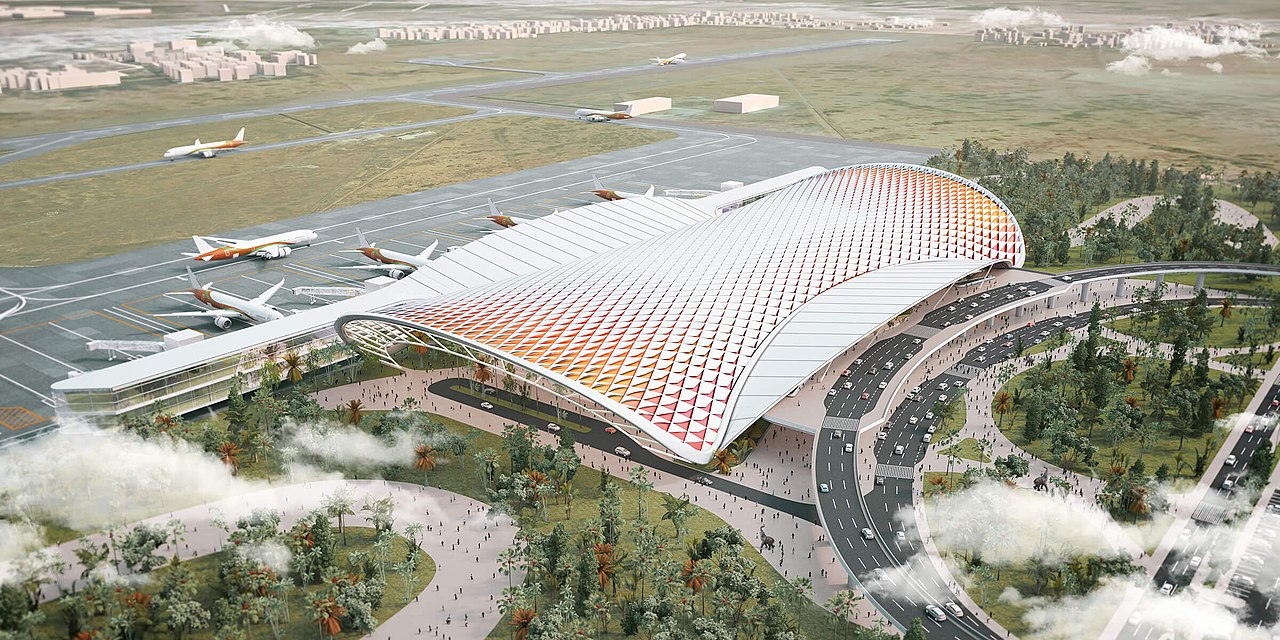All Indian airports to be carbon neutral in near future - Jyotiraditya Scindia
Radhika Bansal
04 May 2022

Union Civil Aviation Minister Jyotiraditya Scindia on Tuesday, May 3 said that India is working on making carbon neutral airports in future.
Taking to Twitter, Mr Scindia said, "India is working towards making its airports carbon neutral shortly to emerge as a responsible player in the international civil aviation industry."
"The way Indian civil aviation has bounced back post #COVID19 with all protocols in place shows its resilience & determination. With a robust and holistic plan for the future, we are sure, we will set new milestones in air, soon" - at the Reception of the Indian delegation at @icao (International Civil Aviation Organisation)," he added.
https://twitter.com/JM_Scindia/status/1521494293604671488
Upon reaching the ICAO office headquarters in Montreal, Mr Scindia was received by the High Commissioner of India, Ajay Bisaria and the Representative of India, Shefali Juneja.
Earlier, he participated in the roundtable discussion, organised by the Canada-India Business Council and spoke about the opportunities available in the civil aviation market in India.
"Participated in an engaging roundtable discussion organized by the Canada-India Business Council, along with industry players from across the aviation spectrum. Spoke about the opportunities available in India, one of the fastest-growing civil aviation markets globally," Scindia tweeted.
India plans to make carbon-neutral airports soon - Jyotiraditya Scindia
Mr Scindia arrived in Montreal on Tuesday, May 3 on the last leg of his visit to North America.
ALSO READ - DIAL claims that Delhi Airport will be a net-zero carbon emitter by 2030
Delhi airport will become a net-zero carbon emission facility by 2030, said its operator DIAL. Achieving “carbon neutral” or “net-zero carbon emission” status refers to a policy of not increasing carbon emissions and of achieving carbon reduction through offsets
Read next
Upcoming Airbus A321XLR to have a shorter flight time due to potential fire concerns
Radhika Bansal
04 May 2022

Airbus SE may need to reduce the top range of its coming A321XLR jetliner, a key selling point for the new narrowbody, as European regulators seek to lessen the fire risk from an extra fuel tank in its rear fuselage, according to people familiar with the matter.
Improvements to fire safety design around the rear centre tank are likely to add weight to the XLR and have a minor impact on its range, according to the people, discussing a confidential matter. Some customers have been informed of potential changes to the model’s specifications.
The European Union Aviation Safety Agency flagged the issue in 2021, and Airbus rival Boeing Co. subsequently suggested the tank posed a fire threat. The regulator hasn’t yet issued specific requirements.
Upcoming Airbus A321XLR to have a shorter flight time due to potential fire concerns
The U.S. Federal Aviation Administration proposed similar “special conditions” to the A321XLR fuel tank on April 6. Airbus is discussing certification requirements with EASA, said Stefan Schaffrath, a spokesman for the Toulouse, France-based manufacturer.
“Safety is our number one priority,” he said. “We let independent authorities take all the necessary time to make a decision and would listen carefully to any requirements if they come.” Certification of the A321XLR is ongoing, EASA spokeswoman Janet Northcote said in an email.
“The complete set of conditions with the installation of the rear centre tanks is still under the definition” and will be published for comment when ready, she said.
ALSO RAED - Airbus A321XLR – The world of narrowbodies redefined
The U.S. Federal Aviation Administration proposed similar “special conditions” to the A321XLR fuel tank.
The tank, sitting under the floor of the passenger cabin, expands the XLR’s advertised range to 4,700 nautical miles -- about 18% more than the current A321LR -- allowing it to connect city pairs such as Tokyo to Sydney, Dubai to Johannesburg or London to Miami.
Boeing can’t match the XLR’s combination of range and capacity with its 737 Max, highlighting the importance of the Airbus model and any potential setbacks. Through February, it had generated 515 orders, with some airlines using the single-aisle to replace retiring Boeing 757 and 767 jets.
The first deliveries are targeted for 2023. Extra Weight despite the plane’s appeal, fitting the rear-centre tank has proved to be a challenge.
Airbus told EASA that it was installing insulation under the passenger floor to keep the fuel stored below from making their feet cold, but said its design didn’t meet existing standards for burn-through compliance.
Airbus told EASA that it was installing insulation under the passenger floor to keep the fuel stored below from making their feet cold
The regulator said in a January 2021 consultation paper that Airbus would have to demonstrate that the new variant was as safe as previous versions.
In a submission made in response to the so-called special condition, Boeing pointed out further risks associated with events such as external fires or landing-gear failures.
EASA said in February 2021 that it agreed and would address some of those risks. The agency said then that it was reviewing the rear-centre tank’s design with crashworthiness, and that it would issue a special condition consultation tied to threats from external fires or heat transfer.
In its comments in 2021, Boeing said that “fuel tanks integral to the airframe structure inherently provide less redundancy than structurally separate fuel tanks” and could pose potential hazards in otherwise survivable off-runway events or landing-gear failures.
Existing FAA regulations don’t address the novel fuel-tank design in the XLR
Airbus had planned to install insulation panels under the floor of the plane but had said there wasn’t enough space to install ones that fully meet existing standards for burn-through compliance. The FAA proposal gives the public until May 23 to file comments.
The agency will then consider the comments before issuing a final rule. Existing FAA regulations don’t address the novel fuel-tank design in the XLR, so the agency believes added measures are needed to ensure that safety is equivalent to traditional fuel tanks.
The current design won’t be adequate to protect passengers from an external fire or ensure that they have time to safely evacuate after a survivable crash, the FAA said.
The current standards require that fire from burning jet fuel doesn’t immediately reach the cabin.
ALSO READ - A321 XLR to start test flights soon | Completes final structural assembly
Fuel-tank insulation requirements were put in place in recent decades after a series of airline accidents in which passengers were uninjured when the plane came to a stop, but multiple deaths occurred because they couldn’t escape quickly enough as fire and smoke penetrated the fuselage.
The current standards require that fire from burning jet fuel doesn’t immediately reach the cabin. Typically, that’s accomplished by using flame-retardant insulation materials next to a jet’s thin aluminium fuselage wall, but the FAA said it would consider other methods of ensuring the same level of safety.
(With Inputs from Bloomberg)
Read next
DGCA finds Indigo at fault after not allowing specially-abled child onboard
Radhika Bansal
18 May 2022
Aviation regulator DGCA Monday, May 16 said it has issued a showcause notice to IndiGo after a fact-finding committee found the airline staff prima facie violated regulations in denying boarding to a specially-abled child at the Ranchi airport on May 7.
The airline had on May 9 said the boy was denied boarding as he was "visibly in panic". As the boy was prohibited from boarding the Ranchi-Hyderabad flight, his parents -- who were accompanying him -- also decided not to enter the plane.
The Directorate General of Civil Aviation had constituted a fact-finding committee to probe the matter. "The committee has submitted its report," the DGCA said in a statement on Monday, May 16.
DGCA finds Indigo at fault after not allowing specially-abled child onboard
The proceedings of the committee were partly held in the open and partly in-camera as per the request of the affected family, it said.
"The findings of the committee prima facie indicate inappropriate handling of passengers by the Indigo staff thereby resulting in certain non-conformances with the applicable regulations," it mentioned.
Given this, it has been decided to issue a showcause notice to the airline through its authorised representative to explain why suitable enforcement action should not be taken against them for the non-conformances, it said.
"To meet the ends of justice, the airline has been provided with an opportunity for a personal hearing as well as for making written submissions in the next ten days from today i.e. till May 26, 2022. After hearing their submissions, appropriate action as per law would be taken," it added.
IndiGo CEO Ronojoy Dutta had expressed regret over the incident and offered to buy an electric wheelchair for the specially-abled child.
The Directorate General of Civil Aviation (DGCA) had last week formed a three-member team to conduct a "fact-finding enquiry" into IndiGo recently barring a specially-abled child from boarding a flight at the Ranchi airport as he was in a "state of panic".
IndiGo CEO Ronojoy Dutta had expressed regret over the incident and offered to buy an electric wheelchair for the specially-abled child. Dutta said the airline staff took the best possible decision under difficult circumstances.
Aviation Minister Jyotiraditya Scindia said on Twitter that no human being should have to go through this and he is investigating the Ranchi incident. The incident came to light after other passengers highlighted it on social media.
https://twitter.com/JM_Scindia/status/1523505174672674816
In a statement, Dutta said, "We recognise too well that parents who dedicate their lives to the caring of physically-challenged persons are the true heroes of our society.
Dutta said, "Having reviewed all aspects of this incident, we as an organisation are of the view that we made the best possible decision under difficult circumstances."
"Throughout the check-in and boarding process, our intent of course was to carry the family. However, at the boarding area, the teenager was visibly in panic," he added. "All of us at IndiGo are truly distressed by this particular incident," he said.
Statement by IndiGo's CEO Ronojoy Jutta
Since April, the airline has carried over 75,000 specially-abled passengers on its flights and its crew and airport staff are trained to serve such passengers sensitively, Dutta added.
According to DGCA regulations issued in 2017, passengers who are likely to be unruly and disruptive must be carefully monitored and if deemed to pose a threat to the safety and security of a flight, fellow passengers or the staff on board the plane, they should be refused embarkation.
"Airline shall establish a mechanism to detect and report unruly passenger behaviour at check-in, in the lounges and at the boarding gate to prevent such passengers from boarding," the regulations said.
IndiGo’s statement had not gone down well with the public and the authorities.
In a statement issued, IndiGo said in "view of the safety of passengers, a specially-abled child could not board the flight with his family on May 7, as he was in a state of panic". The ground staff waited for him to calm down till the last minute but to no avail, it added.
The airline made the family comfortable by putting them up in a hotel and they flew the next morning to their destination, it said.
IndiGo’s statement had not gone down well with the public and the authorities. The public furore had led to the Union aviation minister tweeting, "There is zero tolerance towards such behaviour. No human being should have to go through this! Investigating the matter by myself, post which appropriate action will be taken."
Read next
A new integrated passenger terminal building at Trichy Airport in Tamil Nadu will be ready by April 2023 as 75% of the construction work has been completed, the Airports Authority of India said on Monday, May 2.
“More than 75% of the construction work for the terminal building is completed and the project will be ready by April 2023,” the Airports Authority of India (AAI) said in a statement.
Trichy Airport's new terminal building to be ready by 2023 (Image Courtesy - Chennai Updates - Twitter)
In Tamil Nadu, Trichy is the third-largest airport in terms of international passenger traffic next to Chennai and Coimbatore. The development of aviation infrastructure will ensure enhanced air connectivity for the people of Trichy and the surrounding area in Tamil Nadu.
Airports Authority of India has undertaken the expansion work of Trichy Airport which includes the construction of a new integrated passenger terminal building, a new Apron, an Air Traffic Control (ATC) tower, and upgradation of airside facilities to cater to the growing passenger traffic and reduce congestion during peak hours at the airport.
The new terminal building being constructed at the cost of INR 951.28 crore has been designed to process 2,900 passengers during peak hours. Equipped with 48 check-in counters and 10 boarding bridges, the terminal will be an energy-efficient building with sustainable features, the Airports Authority of India said.
In Tamil Nadu, Trichy is the third-largest airport in terms of international passenger traffic next to Chennai and Coimbatore. (Image Courtesy - Chennai Updates - Twitter)
The interiors of the airport’s building will reflect the colours and culture of the ancient city in southern India, which is known for the Kaveri and Kollidam rivers that flow around the Srirangam island and the famous Ranganathaswamy temple.
“With an area of 75,000 sq m, the new terminal building has been designed as an iconic structure of dynamic and dramatic building form with a majestic roof. The interiors of the building reflect the colours and culture of the city through materials and textures in a contemporary manner,” the statement said.
The airport expansion project also includes a new apron, associated taxiways, and an isolation bay to make the airport suitable for Multiple Apron Ramp systems i.e. five wide-body (Code E) or 10 narrow-body aircraft (Code C).
The Trichy airport is currently served by two Indian and four foreign carriers and provides direct connectivity to five domestic and nine international destinations. (Image Courtesy - Chennai Updates - Twitter)
Other than this, the construction of a control room, supporting equipment rooms, Terminal RADAR, RADAR simulation, automation facilities, VHF, AAI offices and meteorological offices are also part of the project.
The Project also includes a four-lane elevated access road connecting the terminal building to the city.
The Trichy airport is currently served by two Indian and four foreign carriers and provides direct connectivity to five domestic and nine international destinations.
Cover Image - Chennai Updates - Twitter
Read next
Quieter flying cars on the way- thanks to a unique "non-tilting" thrust vectoring propulsion system
Prashant-prabhakar
04 May 2022

The advancement of flying cars and eVTOL aircraft is redefining urban air mobility like never before. Most eVTOL aircraft in the making are touted to run purely on batteries. In more ways than one, the development of flying cars and eVTOL could help to improve the environment with regards to emissions.
Founded in 2020, JETX- an Orlando-based startup has been working on designing a modular propulsion system with vector thrust mechanisms, apparently touted to reduce noise and which allows for "a clean design."
New Atlas
According to the company, the propulsion system can be configured in multiple ways for eVTOL and eSTOL aircraft. JetX further claims that its vector thrust device can work with electric and non-electric power sources, and features the capability of embedding it in the airframe to create a hidden propulsion system.
Reportedly, the new propulsion system will allow an eVTOL aircraft to remain level while flying vertically and horizontally by using ventral flaps that redirect the thrust from the fans.
How did the idea come about?
Bryan Welcel, one of the founders of JetX, had an idea to create a propulsion system that would vector without rotating in flight. The team started off with EDFs [electric ducted fans] and applied non-rotating vectoring for vertical flight to fluidic thrusters. This culminated in a new airflow propulsion system with an onboard computer that would direct the airflow from a power source, such as a compressor, to thrusters with fluidic nozzles. The computer would direct the airflow to fluidic nozzles for vertical or forward flight, depending on various stages of the flight.
https://www.youtube.com/watch?v=eTkqgnvSTBo
The power sources do not rotate for vertical flight. This option allows us to embed the propulsion inside a fuselage or vehicle body, which makes it a much better option- not only for aircraft design but also for the fuselage or vehicle body to work as an enclosure to reduce noise.JetX co-founder Bryan Welcel said in an interview with eVTOL.com
According to Bryan, the propulsion system is unique in that the wings do not tilt. It is very much similar to the technology on a F35 or Harrier where the propulsion doesn't rotate, and the thrust vectors.
https://www.youtube.com/watch?v=iRgcC9eqEJg
F-35 Thrust Vectoring Nozzle | Representative
Reportedly, JetX doesn't seem to have fixated on a particular method for vectoring the thrust as it is collaborating with other aircraft designers ad hence keeping all options open. From what is known, they are designing and testing systems using ventral flaps, external flaps, "rotating" thrust vectoring, cascade vanes and buckets. Notably, JetX's ventral flap design is patent-pending.
Currently, the company is focussing on prototyping and testing the vectoring systems and it will be a long way down the road before they actually get to prototyping their own aircraft to prove the system.
eVTOL
Although being very much in the conceptual and experimental stage, Welcel is optimistic that time is likely on their side, as there is still a long road to building the required infrastructure for eVTOL flying taxis.
Apparently, JetX’s propulsions can be fully embedded and can be also used to create eVTOL stealth aircraft for the military.
SOURCE(s)
COVER: eVTOL
Read next
Qantas "Project Sunrise" flight from Sydney to London to commence on Airbus A350 aircraft
Radhika Bansal
03 May 2022

Qantas Airways Ltd had ordered 12 A350-1000 planes from Airbus SE to be used on what will be the world's longest commercial flight from Sydney to London, as well as 40 narrowbody jets to renew its domestic fleet.
The deal comes as market conditions improve and demand domestic and international travel recovers from the pandemic faster than expected, allowing the carrier to reduce debt and forecast a return to profit in the financial year starting July 1.
"The board's decision to approve what is the largest aircraft order in Australian aviation is a clear vote of confidence in the future of the Qantas Group," Chief Executive Alan Joyce said in a statement.
Qantas' "Project Sunrise" flight from Sydney to London to commence on Airbus A350 aircraft
Qantas did not disclose the value of the deal but it is likely to be in the billions of dollars based on aircraft list prices. Qantas estimated Project Sunrise would have an internal rate of return of around 15%.
Non-stop flights from Sydney to London, which will take nearly 20 hours, will begin in late 2025 following the delivery of A350-1000s, the airline said.
The A350s will carry 238 passengers across first-class, business class, premium economy and economy class, with more than 40% of the cabin dedicated to premium seating, it added. Qantas said it was also ordering 40 A321 XLR and A220 aircraft from Airbus.
Qantas has also ordered 40 A321 XLR and A220 aircraft from Airbus.
The deliveries of 20 A321XLRs will start in late 2024, while 20 smaller A220s will arrive in late 2023 - renewing the carrier's ageing domestic fleet. The order also includes options to buy another 94 aircraft that would arrive through to 2034.
"The phasing of this order means it can be funded within our debt range and through earnings, while still leaving room for shareholder returns in line with our financial framework," Joyce said.
The new domestic fleet "will reduce emissions by at least 15% if running on fossil fuels, and significantly better when run on sustainable aviation fuel," Joyce said, further asserting that its "Project Sunrise" would be carbon neutral from day one.
Qantas in December selected Airbus as the preferred supplier for a major order to renew its ageing narrowbody fleet
Airbus Chief Commercial Officer Christian Scherer said the aircraft to be used on the Sydney-London flights would offer more fuel storage than A350-1000s currently in operation with other airlines.
Qantas in December selected Airbus as the preferred supplier for a major order to renew its ageing narrowbody fleet, in a blow to incumbent supplier Boeing.
The carrier was set to announce the deal that brings it closer to launching record-breaking direct flights of nearly 20 hours on the "Kangaroo route" between Sydney and London.
Qantas operated research flights for the long-haul route in 2019, including a trial London-Sydney trek of 17,800 kilometres (11,030 miles), which took 19 hours and 19 minutes. A trial New York-Sydney flight in the same year covered 16,200 kilometres (10,200 miles) and took a little over 19 hours.
Qantas already operates a 14,498-kilometre Perth-London trip that takes 17 hours.
Singapore Airlines currently operates the world's longest non-stop commercial flight from Singapore to New York, covering 16,700 kilometres (10,400 miles) in a little under 19 hours. Qantas already operates a 14,498-kilometre Perth-London trip that takes 17 hours.
The A350-1000 planes will be powered by Rolls-Royce Trent XWB-97 turbofan engines, designed to be 25% more fuel-efficient than the previous generation of aircraft, Qantas said.
In a separate filing, Qantas said while it expects an underlying operating loss for fiscal 2022, the second half of the year would benefit from improved domestic and international demand with free cash flow seen rising further in the current quarter.
Pratt & Whitney GTF Engines to Power Qantas Airbus A220 and A320neo Family
Qantas Airways ("Qantas") has confirmed selection for Pratt & Whitney GTF engines to power 40 Airbus A220 and A320neo family aircraft, including A321XLR, which the airline will operate on domestic and short-haul international routes.
Leaders from Airbus, Qantas and Pratt & Whitney gathered in Sydney, Australia, to celebrate the milestone with A220 aircraft demonstration flights and a static display for media, stakeholders and employees.
Pratt & Whitney GTF Engines to Power Qantas Airbus A220 and A320neo Family
Pratt & Whitney will also provide Qantas with engine maintenance through a long-term EngineWise® Comprehensive service agreement. Aircraft deliveries are expected to begin in the second half of 2023.
Headquartered in Sydney, Australia, Qantas is the flag carrier of Australia. The airline's history with Pratt & Whitney goes back more than 70 years to Wasp-powered Douglas DC-3 and DC-4 aircraft, followed by JT3D-powered Boeing 707 aircraft when the airline entered the jet age.
Qantas Group currently operates several aircraft types with Pratt & Whitney engines, including more than 100 Airbus A320ceo family aircraft with V2500 engines at Jetstar, De Havilland Canada Dash 8 aircraft with PW100 and PW150 engines at QantasLink, and the world's first Airbus A321P2F at Qantas Freight, a passenger-to-freighter conversion powered by V2500 engines.



Comment